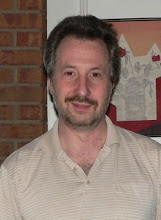We are forwarding to Brno, the home of the famous ZKL BRNO hockey club. Here the Czechoslovakian hockey legend Jaroslav Jirik played for 12 seasons.
A talented right winger with a natural scoring touch, Jaroslav Jirik was the first player from an Eastern Bloc country to play in the NHL. When he suited up for three games with the St. Louis Blues in 1969-70, Jirik was an experienced international competitor who was granted permission by the Czechoslovakian authorities to sample the NHL.
OK, Now let me introduce the city of BRNO.

Brno is the second city of the Czech Republic, and the capital of the ancient state of Moravia (the modern-day Czech Republic is basically made up of the states of Bohemia and Moravia). The city's written history dates back to the XI century, but there has been a settlement on this time for considerably longer than that. In the 19th century rapid industrial growth, especially in the textile industry, lead to Brno being known as "the Manchester of Austria". Seeing as though I'm from the Manchester of Manchester I thought I'd better have a look at the place.
Today Brno remains an industrial city with a sprawl of ugly suburbs made of factories and high-rise housing. However, at the centre of everything the historic old town, made up of a combination of baroque churches and palaces, and art nouveau apartments, has survived more or less intact, and this is where we spent most of our time.
Brno is a history of science (Gregor Mendel developed his theory of genetics here) and culture (the composer Leos Janacek spent most of his working life in the city). We found plenty to see and do, and it remains considerably cheaper and less hectic than Prague. Give it a try!

The Old Town is where you'll probably spend most of your time in Brno, and namesti Svobody (Freedom Square) is at the heart of the Old Town, so that seems as good a place as any to start. The square, which used to hold the city's main market, is a strange affair. For a start it's triangular. And while it has plenty of interesting buildings surrounding it there's nothing so distinctive as to give the square any sense of special identity (as the town halls in the main squares of Prague and Wroclaw do, for example). It's still a pleasant enough place though, especially for an al fresco beer or two in the summer.
At the centre of the square, now marooned on a traffic island, is the late 17th century plague column, an ornate affair dotted with guilded statues of some obscure saints. It looks very attractive, and is a popular meeting point
The cathedral is the source of another of Brno's many legends; in 1645 when the city was besieged by the Swedes (what they were doing in this neck of the woods is a long story...) the Swedish commander, Tortennsen, was getting a bit frustrated that it was taking so long to break down the city's defences and so he decided that he'd give it one last go, and if he hadn't taken the city by midday then he'd give up and go in search of an easier target. The city's defenders got wind of this and when the Swedes final attack was looking like it might do the job they rang the church bells for midday an hour early. Tortennsen fell for it (d'oh!) and called off the attack, the city was saved, and to this day there isn't an Ikea in Brno. Sounds a bit unlikely but in celebration every day at 11 o'clock the cathedral's bells ring out 12 times (presumably just in case there's a Swede with a long memory and a grudge in the area).

There are some more attractive art nouveau buildings on Rasinova (like the Sherlock Holmes bar). A bit further up from St James is yet another church, St Thomas (sv. Tomase). This big, white baroque building dates from the 1660s and replaced a 14th century church on the same site. Inside there are more white-washed walls, but a rather decorative gilded pulpit and a collection of side altars, while the ornate main altar, a collection of marble, gilding, statues and paintings, stretches all the way up to the roof. Attached to the church is an Augustinian monastery, part of which was later turned into the palace of the Governor of Moravia (Mistodrzitelsky palac), and which now holds paintings that are part of the collection of the Moravian Gallery (Moravske Galerie). (The rest of the Moravian Gallery is in the UPM and the Prazkuv Palace, both on Husova). While the palace was still the Governor's home Napoleon Bonaparte stayed here a couple of times, while he was looking for someone else to fight (short men are often like that).
At its northern end Rasinova opens out into Moravske namesti, a rather tatty park; there's a fountain here (although it didn't have any water in it while we were there); plenty of benches, making it a popular meeting spot, and a good place to pick up a granny if you're into that kind of thing; and the Soviet War Memorial is round here somewhere, although we didn't see it.
Heading southwest down Maresova (part of the ring road round the Old Town) will bring you to one last church (actually, there are plenty more churches in Brno, but this is the last one I saw) the late 19th century Cerveny kostel ("Red Church"), which obviously takes its name from the red bricks it is built from.

Jaroslav Jirik
The Ice hockey stadium in Brno, also known as the „Za Lužánkami“ ice hockey stadium, is one of the oldest in the Czech Republic, and was given in the Brno Master Zoning Plan as early as the 1930s. Its construction was held up by the beginning of the Second World War, and in 1946 work started on the stadium, which was opened in 1947. It was the second of its kind in the country to have an artificial ice surface. It became the centre of ice hockey in Brno, especially RH Brno, today known as Kometa, which was established in 1953. This was followed by Spartak ZJŠ Brno, TJ Lokomotiva Ingstav and at the end of the 1990s also HC Ytong. The uncovered stadium was provided with a roof in 1964, and the stadium´s appearance has remained the same to the present day.
























No comments:
Post a Comment